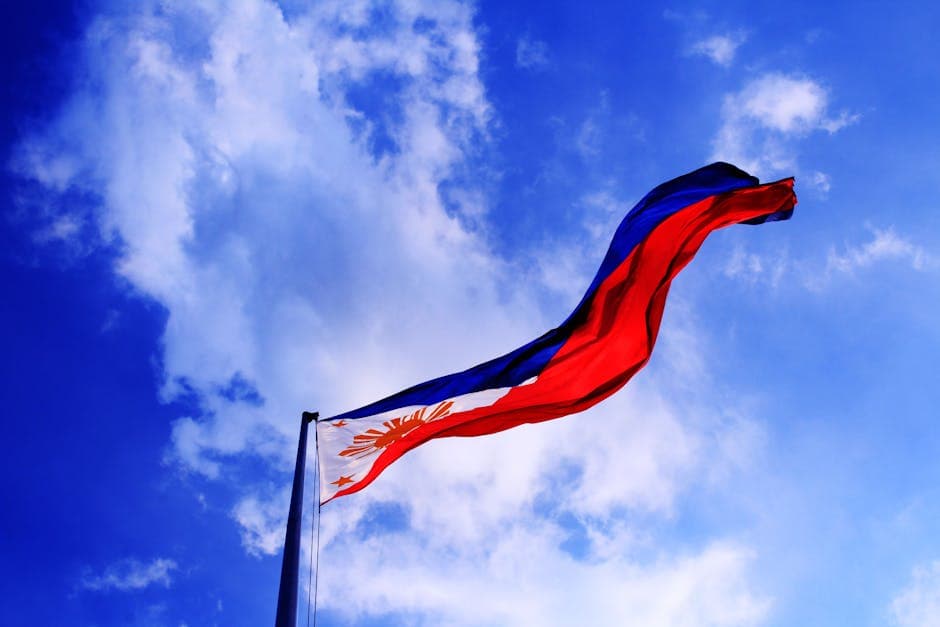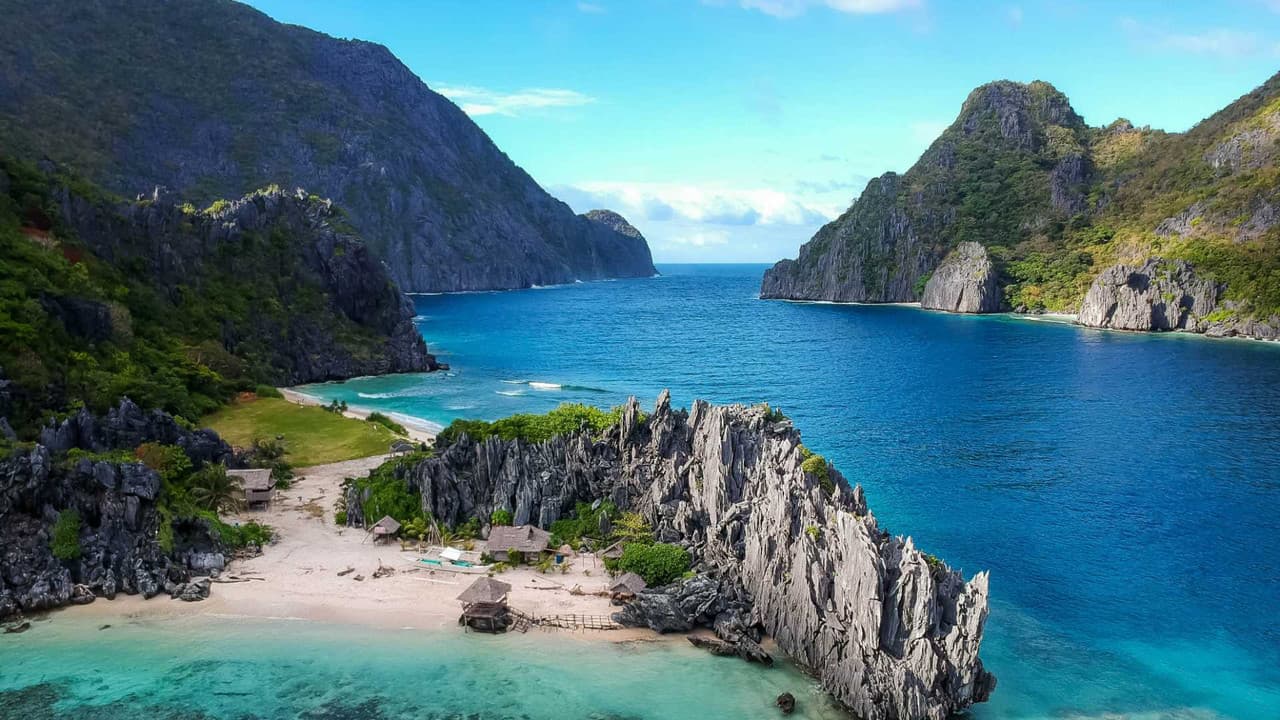Lucas Botzen
Founder & Managing Director
Last updated:
November 10, 2025
What is an Employer of Record in Philippines?
View our Employer of Record servicesAn Employer of Record (EOR) in the Philippines is a service provider that becomes the legal employer for your team in the country. The EOR handles essential tasks like payroll, taxes, benefits, and ensures you follow all local labor laws. This arrangement allows you to manage your employees' day-to-day work while the EOR takes care of the administrative and legal responsibilities. Many companies use an EOR, like Rivermate, to hire talent in the Philippines without needing to set up a local business entity.
How an Employer of Record (EOR) Works in Philippines
Using an EOR in the Philippines simplifies the process of hiring and managing employees. Here is a step-by-step look at how it works:
- Partner with an EOR You choose an EOR provider to act as the legal employer for your workers in the Philippines. You maintain control over daily tasks and projects, while the EOR handles the legal and HR functions.
- Define Roles and Contracts You work with the EOR to create employment contracts that comply with Philippine labor laws. These contracts outline job responsibilities, salary, and working conditions.
- Onboarding New Hires The EOR manages the entire onboarding process. This includes registering your employees with government agencies like the Social Security System (SSS), PhilHealth, and the Pag-IBIG Fund.
- Ongoing Management The EOR handles all ongoing administrative tasks. This includes processing monthly payroll, withholding taxes, and managing employee benefits. They ensure everything is done according to the latest regulations from the Department of Labor and Employment (DOLE) (https://www.dole.gov.ph/) and the Bureau of Internal Revenue (BIR) (https://www.bir.gov.ph/).
Why use an Employer of Record in Philippines
Using an EOR in the Philippines offers a straightforward way to build a team while avoiding common legal and administrative hurdles. It allows you to focus on your core business goals instead of getting stuck on complex local rules.
Here are some key benefits:
- Stay Compliant with Labor Laws The Philippines has detailed labor laws. An EOR understands these regulations, from wages to mandatory benefits, and keeps you compliant, protecting you from penalties.
- Access a Skilled Workforce The Philippines has a large pool of talented professionals, especially in IT and business support. An EOR makes it easier to hire this talent by managing compliant and competitive job offers.
- Save Time and Money Setting up a legal entity in the Philippines can be expensive and take a lot of time. An EOR lets you hire quickly without the high costs of registration, legal fees, and setting up an office.
- Reduce Risk By handling all legal and compliance tasks, an EOR reduces your risk. They manage employment contracts, payroll, and terminations correctly, which helps you avoid legal issues.
Responsibilities of an Employer of Record
As an Employer of Record in Philippines, Rivermate is responsible for:
- Creating and managing the employment contracts
- Running the monthly payroll
- Providing local and global benefits
- Ensuring 100% local compliance
- Providing local HR support
Responsibilities of the company that hires the employee
As the company that hires the employee through the Employer of Record, you are responsible for:
- Day-to-day management of the employee
- Work assignments
- Performance management
- Training and development
Costs of using an Employer of Record in Philippines
Rivermate's transparent pricing model eliminates complexity with a single, competitive monthly fee per employee. Unlike traditional PEO providers, our pricing in Philippines includes comprehensive HR support, benefits administration, compliance management, and access to our proprietary dashboard for real-time workforce analytics. No hidden costs, no setup fees—just straightforward pricing that scales with your business needs while ensuring full legal compliance in Philippines.
Employ top talent in Philippines through our Employer of Record service
Book a call with our EOR experts to learn more about how we can help you in Philippines







Book a call with our EOR experts to learn more about how we can help you in Philippines.
Trusted by more than 1000 companies around the globe
Hiring in Philippines
Hiring in the Philippines means tapping into a large and skilled workforce. The country has a growing economy and a young population, making it an attractive place to build a team. To do it right, you need to understand the local labor laws. This will help you stay compliant and build a strong relationship with your employees from the start.
Employment contracts & must-have clauses
An employment contract is the foundation of your relationship with your new hire. While verbal agreements can be valid, a written contract is always the best approach. It provides clarity for both you and your employee.
Your employment contract should be in English, but if your employee is a Filipino national who doesn't understand English, you should provide a copy in Filipino as well.
Here are the essential clauses to include:
- Job title and description: Clearly define the role and responsibilities.
- Compensation: State the salary and any allowances.
- Working hours: The standard is 8 hours a day, 40 hours a week.
- Probationary period: If applicable, this should not exceed six months.
- Benefits: Detail mandatory contributions to the Social Security System (SSS), PhilHealth, and the Pag-IBIG Fund.
- Leave entitlements: Include vacation, sick, maternity, and paternity leave.
- Termination clauses: Outline the grounds and procedures for ending the employment relationship.
Probation periods
In the Philippines, you can hire an employee on a probationary basis for up to six months. This period allows you to assess their suitability for the role. It is important to communicate the standards for regularization to the employee at the start of their employment.
If an employee continues to work after the probationary period, they are considered a regular employee by law. Probationary employees are also protected by labor laws and cannot be dismissed without a valid reason.
Working hours & overtime
The standard workweek in the Philippines is 40 hours, typically 8 hours per day. Any work beyond 8 hours a day is considered overtime.
Here’s how overtime pay is calculated:
| When Overtime is Performed | Overtime Pay Rate |
|---|---|
| Regular workday | Regular wage + at least 25% |
| Holiday or rest day | Rate for the first 8 hours + at least 30% |
Public & regional holidays
Employees in the Philippines are entitled to paid time off for public holidays. There are two types of holidays: regular holidays and special non-working days.
2025 Regular Holidays:
- January 1 (Wednesday) – New Year's Day
- April 9 (Wednesday) – Araw ng Kagitingan (Day of Valor)
- April 17 (Thursday) – Maundy Thursday
- April 18 (Friday) – Good Friday
- May 1 (Thursday) – Labor Day
- June 12 (Thursday) – Independence Day
- August 25 (Monday) – National Heroes Day
- November 30 (Sunday) – Bonifacio Day
- December 25 (Thursday) – Christmas Day
- December 30 (Tuesday) – Rizal Day
- Eidul Fitr (to be declared)
- Eidul Adha (to be declared)
2025 Special (Non-Working) Days:
- January 29 (Wednesday) – Chinese New Year
- April 19 (Saturday) – Black Saturday
- August 21 (Thursday) – Ninoy Aquino Day
- November 1 (Saturday) – All Saints' Day
- December 8 (Monday) – Feast of the Immaculate Conception of Mary
- December 24 (Wednesday) – Christmas Eve
- December 31 (Wednesday) – Last Day of the Year
- October 31 (Friday) – All Saints' Day Eve
In addition to national holidays, there are also local and regional holidays to be aware of.
Hiring contractors in the Philippines
Hiring independent contractors can be a flexible way to access specialized skills. Contractors manage their own taxes and are not entitled to the same benefits as employees, such as overtime pay and the mandatory 13th-month pay.
However, it's crucial to classify workers correctly. Misclassifying an employee as a contractor can lead to significant risks, including financial penalties and legal disputes. The Philippine government can impose fines and require back payment of taxes and social security contributions.
An Employer of Record (EOR) can help you mitigate these risks. An EOR acts as the legal employer for your workers in the Philippines, ensuring compliance with local labor laws. They handle contracts, payroll, taxes, and benefits, allowing you to focus on managing your team and growing your business.

Compensation and Payroll in Philippines
In the Philippines, your payroll responsibilities are guided by the Labor Code. This law sets the foundation for how you pay your team, covering everything from minimum wage to mandatory benefits. It ensures that your relationship with your employees is clear and fair. You'll handle contributions to government agencies for social security, health insurance, and a savings fund.
Payroll cycles & wage structure
You must pay your employees at least once every two weeks or twice a month. Many companies choose to pay their teams on the 15th and the last day of each month.
A key part of the wage structure is the 13th-month pay. This is a mandatory, tax-exempt bonus that you give to all rank-and-file employees. You must pay it on or before December 24th. The amount is at least one-twelfth of the employee's basic salary earned during the calendar year.
Overtime & minimums
The standard workday is eight hours. If an employee works beyond that, you must pay them overtime.
- Regular workday: 125% of their regular pay.
- Rest day or special holiday: 130% of their regular pay.
- Regular holiday: 200% of their regular pay.
Minimum wage varies by region and industry. The rates are set by regional wage boards to reflect the local cost of living. For example, in Metro Manila, the daily minimum wage for non-agricultural workers is 645 PHP.
Employer taxes and contributions
You are responsible for contributing to three main government funds for your employees.
| Contribution | Description |
|---|---|
| Social Security System (SSS) | This covers retirement, disability, and other benefits. |
| Philippine Health Insurance Corporation (PhilHealth) | This is the national health insurance program. |
| Home Development Mutual Fund (Pag-IBIG Fund) | This provides housing loans and savings for employees. |
Employee taxes and deductions
Your employees also contribute to these funds. You will deduct their share from their salary.
| Deduction | Description |
|---|---|
| Withholding Tax | Income tax withheld and remitted to the Bureau of Internal Revenue (BIR). The rate depends on the employee's income. |
| Social Security System (SSS) | Employee's share for their social security benefits. |
| Philippine Health Insurance Corporation (PhilHealth) | Employee's contribution to the national health insurance. |
| Home Development Mutual Fund (Pag-IBIG Fund) | Employee's contribution to their savings and housing fund. |
How an Employer of Record, like Rivermate can help with payroll taxes and compliance in Philippines
An Employer of Record (EOR) manages monthly payroll calculations, employer contributions, and tax filings in-country on your behalf. Rivermate handles registrations, payslips, statutory reporting, and remittances to authorities so you stay compliant with local rules and deadlines—without setting up a local entity. Our specialists monitor regulatory changes and ensure correct rates, thresholds, and caps are applied to every payroll cycle.
Loading calculator...
Benefits and Leave in Philippines
In the Philippines, employee benefits are a mix of government-mandated leaves and contributions, alongside supplemental perks that companies offer to attract and retain talent. You'll find that the law provides a solid foundation of benefits for every employee. Many companies then build on this with their own packages to stand out.
Statutory Leave
The government requires all employers to provide several types of paid leave. These are the basics that you must offer to your employees.
- Service Incentive Leave: Employees who have worked for at least one year are entitled to five days of paid leave. They can use this for vacation or to cover sick days.
- Maternity Leave: Female employees are eligible for 105 days of paid leave for childbirth or miscarriage. An additional 15 days are granted to solo parents.
- Paternity Leave: Married male employees receive seven days of paid leave for the first four deliveries of their legal wife.
- Parental Leave for Solo Parents: Solo parents who have worked for at least one year can take an additional seven days of paid leave.
- Special Leave for Women: Women who undergo surgery for gynecological issues are entitled to two months of paid leave.
Public Holidays & Regional Holidays
The Philippines observes two types of holidays: regular holidays and special non-working days. On regular holidays, employees who work receive double their daily pay. For special non-working days, those who work receive an extra 30% of their daily wage.
Below is a list of the anticipated public holidays for 2025. Note that dates for Eidul Fitr and Eidul Adha are subject to official proclamation. In addition to these national holidays, various regions and provinces have their own local holidays.
| Date | Holiday | Type |
|---|---|---|
| January 1 | New Year's Day | Regular Holiday |
| January 29 | Chinese New Year | Special Non-Working Day |
| February 25 | EDSA People Power Revolution Anniversary | Special Non-Working Day |
| April 9 | Araw ng Kagitingan (Day of Valor) | Regular Holiday |
| April 17 | Maundy Thursday | Regular Holiday |
| April 18 | Good Friday | Regular Holiday |
| April 19 | Black Saturday | Special Non-Working Day |
| May 1 | Labor Day | Regular Holiday |
| June 12 | Independence Day | Regular Holiday |
| August 21 | Ninoy Aquino Day | Special Non-Working Day |
| August 25 | National Heroes Day | Regular Holiday |
| November 1 | All Saints' Day | Special Non-Working Day |
| November 30 | Bonifacio Day | Regular Holiday |
| December 8 | Feast of the Immaculate Conception of Mary | Special Non-Working Day |
| December 25 | Christmas Day | Regular Holiday |
| December 30 | Rizal Day | Regular Holiday |
| December 31 | Last Day of the Year | Special Non-Working Day |
Typical Supplemental Benefits
To stay competitive, many companies in the Philippines offer benefits beyond the legal requirements. Here’s a look at both the mandatory and common supplemental benefits.
| Statutory Benefits | Non-Statutory (Supplemental) Benefits |
|---|---|
| Social Security System (SSS) Contributions | Private Health Insurance |
| Philippine Health Insurance Corp. (PhilHealth) | Additional Paid Vacation and Sick Leave |
| Home Development Mutual Fund (Pag-IBIG) | Performance Bonuses |
| 13th Month Pay | Rice Subsidies or Allowances |
| Overtime and Night Differential Pay | Meal and Transportation Allowances |
| Retirement Pay | Gym Memberships or Wellness Programs |
How an EOR Can Help with Setting Up Benefits
An Employer of Record (EOR) simplifies the process of managing employee benefits in the Philippines. Instead of navigating the complex local regulations yourself, an EOR handles it all for you.
An EOR will:
- Ensure compliance with all local labor laws.
- Manage payroll, including all necessary deductions and contributions for SSS, PhilHealth, and Pag-IBIG.
- Administer all statutory leave benefits, making sure they are tracked and applied correctly.
- Help you create a competitive benefits package by providing insights into local market expectations.
- Handle the enrollment of your employees into all mandatory and supplemental benefit programs.
By partnering with an EOR, you can focus on your core business operations while being confident that your employees are receiving the correct and competitive benefits.
How an Employer of Record, like Rivermate can help with local benefits in Philippines
Rivermate provides compliant, locally competitive benefits—such as health insurance, pension, and statutory coverages—integrated into one EOR platform. We administer enrollments, manage renewals, and ensure contributions and withholdings meet country requirements so your team receives the right benefits without added overhead.
Termination and Offboarding in Philippines
When an employee leaves your company in the Philippines, you need to follow a specific process. This is called termination or offboarding. It involves several steps to ensure you comply with local labor laws. The process is designed to be fair to both you and your employee. It covers everything from final pay to required paperwork.
Notice Periods
When an employee resigns, they generally must give you 30 days' notice. This allows you time to find a replacement and hand over their duties. If you are terminating an employee for authorized reasons like redundancy, you also need to provide a written notice of termination to the employee at least 30 days before their last day. You must also notify the Department of Labor and Employment (DOLE) at least 30 days in advance for authorized causes.
For terminations due to "just cause," like serious misconduct, the process is different. You must first provide the employee with a written notice that explains the reasons for potential termination. The employee then has a reasonable period, usually five days, to respond to the allegations.
Severance Pay
Severance pay depends on the reason for termination. If an employee resigns or is terminated for just cause, they are generally not entitled to severance pay.
However, you must pay severance for authorized causes. The amount varies based on the reason:
| Reason for Termination | Severance Pay Calculation |
|---|---|
| Redundancy or installation of labor-saving devices | One month of pay or one month of pay for every year of service, whichever is higher. |
| Retrenchment to prevent losses, or closure of business | One month of pay or one-half month of pay for every year of service, whichever is higher. |
A fraction of at least six months is considered one whole year when calculating severance pay.
How Rivermate handles compliant exits
Navigating employee exits in the Philippines can be complex. We make it simple. We ensure that every offboarding process complies with the Philippine Labor Code.
Here's how we help:
- Clear and Compliant Process: We manage the entire termination process, from drafting and sending the correct notices to calculating the final pay.
- Expert Guidance: We provide clear guidance on notice periods and severance pay to ensure you meet all legal requirements.
- Documentation: We handle all the necessary paperwork, including the final pay breakdown and the Certificate of Employment.
- Peace of Mind: With Rivermate, you can be confident that you are handling employee terminations correctly and respectfully, minimizing legal risks.
Visa and work permits in Philippines
Moving talented people to the Philippines means navigating local immigration and labor laws. You need to get the right documents to stay compliant and avoid delays. It's a process with specific steps, but straightforward when you know what to expect. For any foreign national to work in the Philippines, they need both a work visa and a work permit.
Employment visas & sponsorship realities
The most common route for long-term employment is the 9(g) Pre-Arranged Employment Visa. This visa allows a foreign national to legally work in the Philippines. Before you can even apply for this visa, you need an Alien Employment Permit (AEP) from the Department of Labor and Employment (DOLE). The AEP confirms that a foreign national is filling a role that a Filipino national cannot.
Here's what you need to know about sponsorship:
- Employer of Record (EOR) can sponsor: An EOR with a legal entity in the Philippines can sponsor employees for a 9(g) visa. This saves you from needing to set up your own local company.
- Labor market test: The sponsoring company, or your EOR, must show that no qualified Filipino is available for the job. This often involves advertising the position locally.
- Position specific: The AEP and 9(g) visa are tied to a specific role at a specific company. If the employee changes jobs or companies, they will need a new AEP.
- Provisional permits: If you need someone to start work before the 9(g) visa is approved, you can apply for a Provisional Work Permit. This can be issued much faster, often in a couple of weeks.
There are other visa types for specific situations, like for treaty traders from certain countries or for employees of companies in special economic zones. But for most professional roles, the 9(g) visa is the standard.
Business travel compliance
For short-term business trips, you don't need a full work visa. These trips cover activities like attending meetings, negotiating contracts, or exploring business opportunities. You cannot engage in any employment or receive payment from a Philippine company on a business visa.
Here are the typical options for short business visits:
| Visa Type | Purpose | Duration |
|---|---|---|
| Visa-free entry | Business and tourism for citizens of many countries, including the U.S. | Up to 30 days, not extendable at the port of entry. |
| 9(a) Temporary Visitor Visa | Business meetings, conferences, and market research. | Up to 59 days, with possible extensions. |
| Special Work Permit (SWP) | Short-term assignments or consultancy work for up to six months. | Initially valid for three months and can be extended. |
For any business visit, you will generally need to provide:
- A valid passport.
- Proof of your business purpose, like a letter of invitation.
- A confirmed return or onward ticket.
- Proof of financial capacity.
How an Employer of Record, like Rivermate can help with work permits in Philippines
Navigating work permits can be complex and time‑sensitive. Rivermate coordinates the entire process end‑to‑end: determining the right visa category, preparing employer and employee documentation, liaising with local authorities, and ensuring full compliance with country‑specific rules. Our in‑country experts accelerate timelines, minimize refusals, and keep you updated on each milestone so your hire can start on time—legally and confidently.
Frequently asked questions about EOR in Philippines
About the author

Lucas Botzen
Lucas Botzen is the founder of Rivermate, a global HR platform specializing in international payroll, compliance, and benefits management for remote companies. He previously co-founded and successfully exited Boloo, scaling it to over €2 million in annual revenue. Lucas is passionate about technology, automation, and remote work, advocating for innovative digital solutions that streamline global employment.
